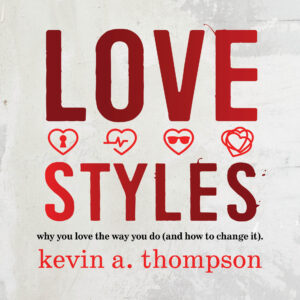For years, I assumed my struggles in relationships were simply a personality flaw I needed to fix.
I loved people, cared deeply, and tried hard. But I often felt confused by my own reactions: hurt too easily, frustrated too quickly, shutting down too fast, or overwhelmed by moments that shouldn’t have felt so big.
Even in my marriage, which is one of the greatest gifts of my life, I found myself caught in patterns I couldn’t explain. Moments of distance felt like danger. Miscommunications spiraled faster than logic. My reactions didn’t match the situation.
Like most people, I chalked it up to communication issues or stress or “that’s just how I am.”
Then I learned about Attachment Theory, and for the first time in my life, things started to make sense.
- What I thought were personality issues were actually attachment patterns.
- What I thought were flaws were actually survival strategies.
- What I thought was “just me” was actually the way my nervous system had learned to feel safe.
As I began to teach others what I was learning, I kept hearing one refrain–“When are you going to write a book on this?”
Three years after first teaching Love Styles, the book is now here:
Love Styles: Why You Love the Way You Do (and How to Change It)
I wrote it because understanding attachment has the power to change marriages, friendships, parenting, leadership, and even your walk with God.
What Is Attachment Theory?
Attachment Theory explains how humans bond and how we respond to connection, closeness, conflict, danger, and emotional needs.
Most people don’t realize that their attachment style influences:
- the fights you keep having
- the silence you’re afraid of
- the distance you feel
- the intensity you bring
- the walls you build
- the people you choose
- why you stay
- why you run
- why you chase
- why you shut down
Psychologists outline four patterns:
-
Secure Attachment – “I can be close and still be myself.”
-
Anxious Attachment – “I fear losing you, so I chase connection.”
-
Avoidant Attachment – “I fear feeling overwhelmed, so I stay distant.”
-
Disorganized Attachment – “I want connection, but I don’t trust it.”
These patterns show up in every relationship—marriage, dating, parenting, friendships, and even your spiritual life.
The bad news–you didn’t choose your attachment.
The good news–you can change it.
Attachment can change. It’s not fixed. It’s not personality or desinty. Attachment patterns are behaviors that were learned early in life. And they worked. They helped get our needs met. But what worked in the past is likely what’s causing frustration in the present.
But thankfully, those patterns can change. And change begins by understanding the ideas and recognizing them in your present relationships.
If you want to discover your attachment pattern in specific relationships, you can take my free assessment:
Take the Love Styles Attachment Assessment here: Love Styles Assessment
(This tool shows you your attachment style in one specific relationship—and you can retake it for multiple people.)
Why Attachment Theory Is So Important in Relationships
Most couples think their biggest problem is poor communication.
It rarely is.
What looks like a communication problem is usually an attachment issue in disguise.
Attachment explains why:
- your spouse shuts down
- you chase when you feel ignored
- conflict feels threatening
- silence feels like rejection
- some people feel smothered by closeness
- others panic when they sense distance
- sex/intimacy become complicated
- emotional safety is so hard to build
You can learn all the communication tools in the world, but if your attachment patterns go unaddressed, the same problems keep resurfacing.
Communication is the symptom. Attachment is the root.
Once you understand attachment, everything else makes sense.
Attachment Theory Through a Christian Lens
Some people wonder whether Attachment Theory fits within a Christian worldview. But to me, it is one of the best explanations of what happened between Genesis 2 and Genesis 3. Attachment Theory partially explains the impact sin had on us.
1. Scripture teaches that we are created for connection.
Genesis 2:18 says, “It is not good for the man to be alone.”
This is more than a marriage verse; it’s a statement of design.
We are created in the image of a relational God.
Father, Son, Spirit—perfect attachment, perfect attunement, perfect unity.
Attachment Theory puts neuroscience behind the theology:
Humans thrive in secure love.
2. Sin breaks attachment.
In the fall, shame enters. Fear shows up. Adam and Eve hide, from God and each other.
Attachment ruptures.
One partner withdraws (avoidant).
One chases (anxious).
Some panic (disorganized).
These patterns aren’t modern inventions. They’re ancient wounds.
3. Jesus came to restore secure attachment.
The ministry of Jesus is essentially an attachment repair mission.
“Come to me.”
“Remain in me.”
“I will never leave you.”
“You are mine.”
Jesus offers presence, safety, empathy, and consistency. It provides everything needed for secure attachment.
4. Spiritual growth is relational growth.
Spiritual maturity is not primarily behavioral modification. It is relational transformation.
Learning to trust God.
>Learning to stay present.
>Learning to love others.
>Learning to receive love.
>Learning to calm your fears.
Attachment Theory helps you understand the emotional patterns that often sabotage spiritual growth.
Start Your Attachment Journey Today
If you want deeper relationships, a calmer nervous system, or healthier connections, learning your attachment pattern is the best place to start.
Take the free Attachment Assessment here:
Discover Your Love Style
And if you want the full roadmap—the stories, the neuroscience, the biblical connections, and the exact steps for change—grab the book here:
Love Styles: Why You Love the Way You Do (and How to Change It)
Your relationships aren’t broken. They’re patterned. And patterns can change.




